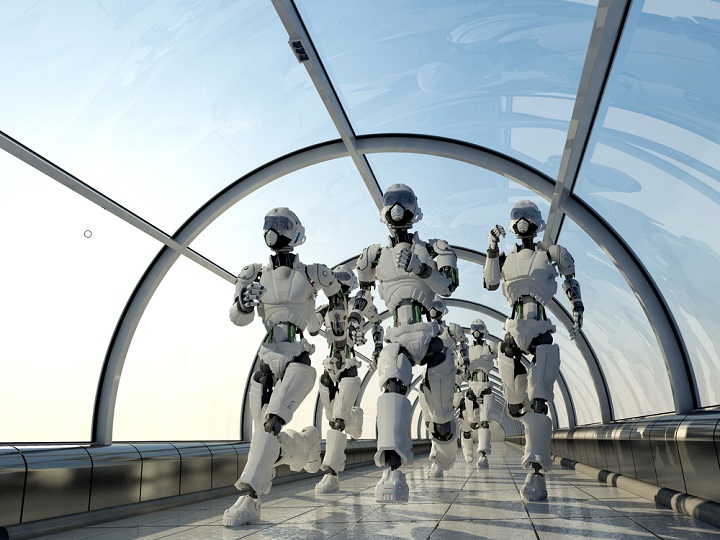Let’s be honest: we all know that robots will one day come for our jobs and when they do, those working in service sectors will be the first to go. That, and the ever-present secretaries who are a fundamental part of the corporate world.
That said, there’s no need to panic as the transition will not happen overnight. Just keep in mind that these machines are slowly catching up and it’s been estimated that, in 10 to 20 years, roughly 50% of jobs today will go in the direction of automation.

Drawing data from the University of Oxford’s employment report, Henrik Lindberg, chief technology officer at Zimpler, created a monochrome chart which suggests that there will one day be a society that relies solely on robots.
“As computers get better at, for example, perception — think self-driving cars — those services jobs are likely next up to be replaced by machines,” explained Jeff Desjardins, editor for Visual Capitalist.

Note the chart above. The black field illustrates the top jobs that will be taken over by automation while the white shows those that are thought to be safe.
It’s predicted that those in the hot seat are workers in service sectors such as cashiers, truck drivers, retail, and food fast restaurants. Additionally, as one might assume, low-income workers will be more affected than those who make six figures.
As of right now, the major difference between humans and robots is that we have empathy. And according to Desjardins, the jobs that will stay in demand for humans will be those that require moral judgment, compassion, and tolerance. This includes nurses, teachers, police officers, and social workers.
With that said, despite robots gaining on human turf, it’s not the end of civilization completely. “While machines destroy jobs, they also often create new ones,” said Desjardins. This is a clear follow up on Marc Andreessen’s outlook where he stated that robots will not necessarily replace people all at once. Besides, we were here first, right?
It’s important to note that not all job losses can be blamed on the emergence of robots. The graph below illustrates that the makeup of the United States job market has changed drastically over the past few years, regardless of the introduction of automation. This is because as the economy evolves and introduces new innovations, there will be some industries that take a turn for the worst while others flourish.
Featured Image: Depositphotos/© Iurii











